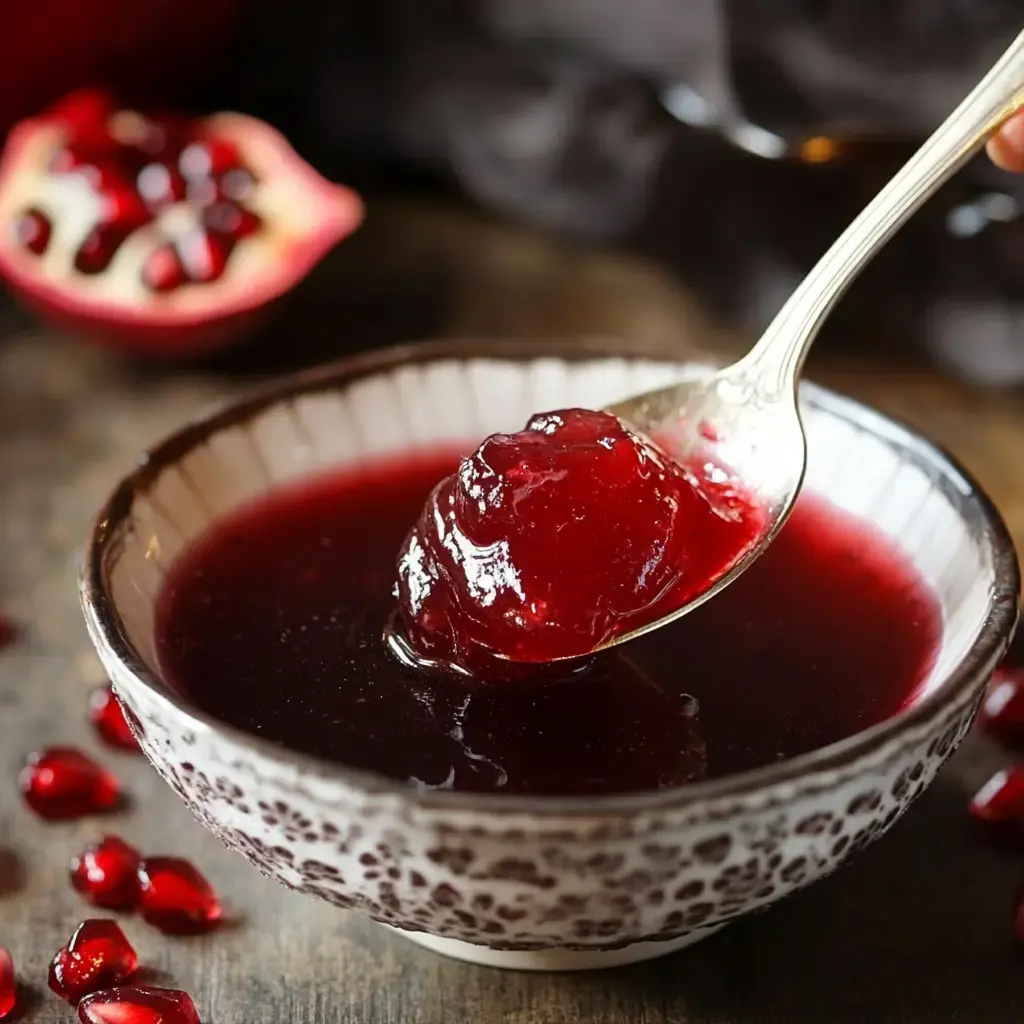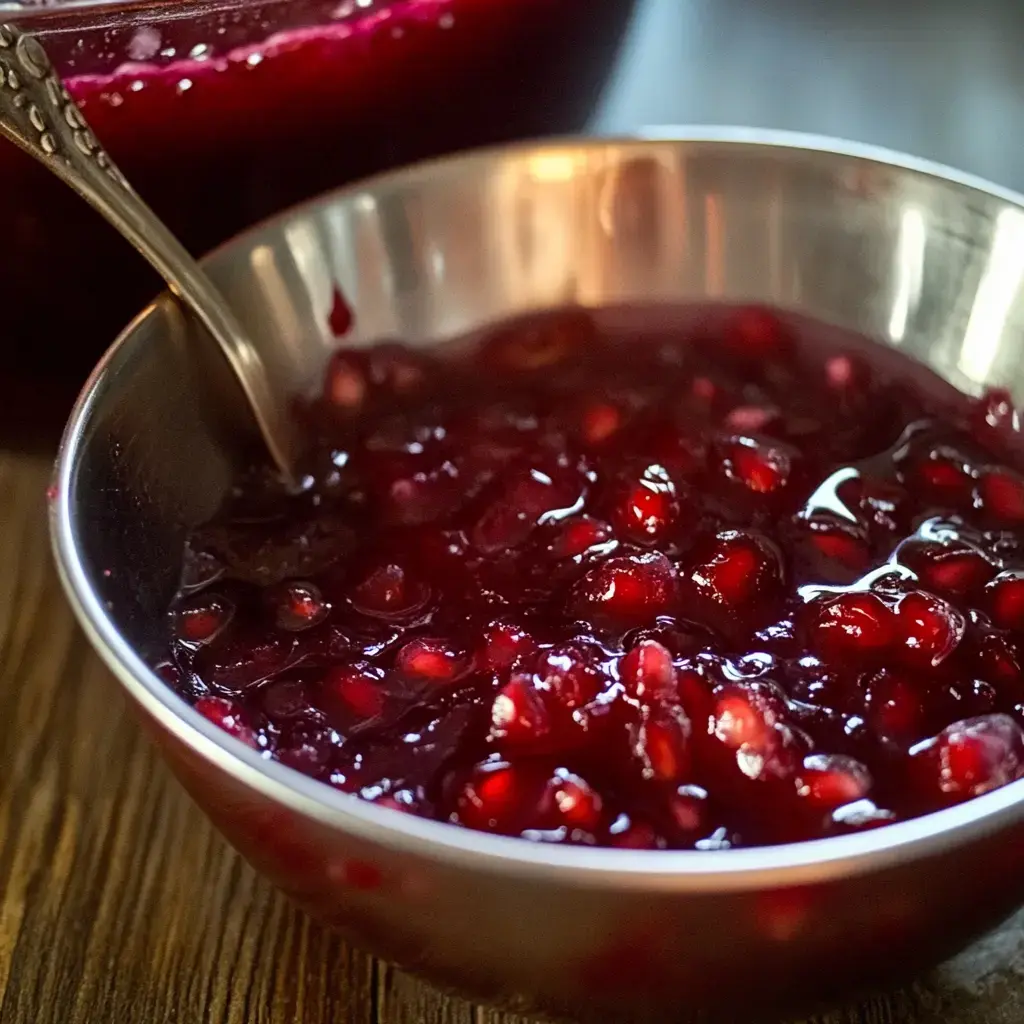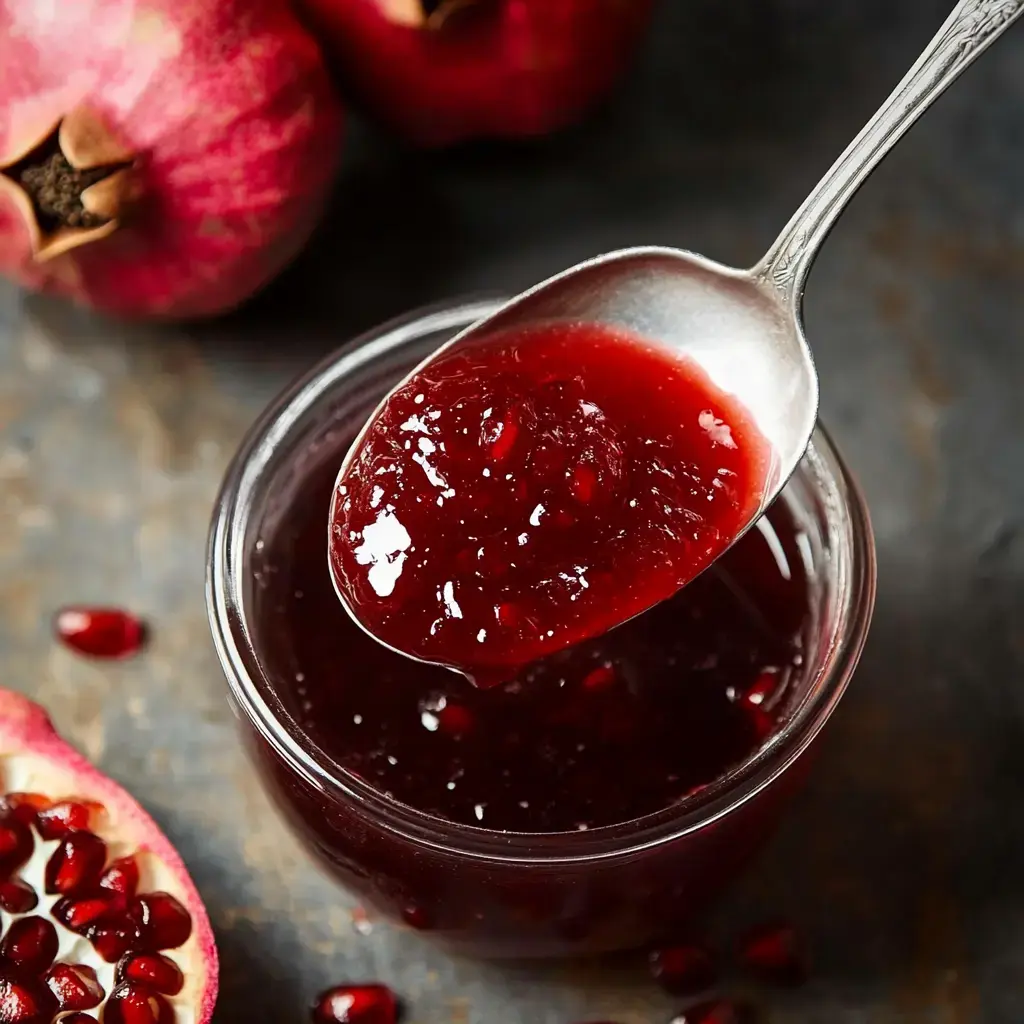 Pin it
Pin it
Every time I make Pomegranate Jelly, it takes me back to sunny, sweet days. I use fresh juice and just a little sugar so it's got a nice balance—not too tangy and never too sugary. My grandma showed me how, and now I whip this up whenever I spot pomegranates at the market.
Why You’ll Love This Pomegranate Jelly
This jelly is a true all-rounder. Slather it on warm bread, swirl into morning yogurt, or brush it onto sizzling grilled meats. All you really need are these three: pomegranate juice, sugar, and plain pectin. The fresh juice lights up the color and flavor. Homemade just hits different compared to the store jars. Buy a bunch of pomegranates while they're around, and you’ll have jars ready whenever you want them.
Ingredients
- White Sugar: Everyday sugar keeps things sweet and helps with the jelly’s color
- Pomegranate Juice: Use nothing but fresh juice for that punch of flavor—make sure it’s pure stuff
- Unsalted Butter: Just a tiny dab keeps foam away while things cook, but skip it if you want
- Pectin: Grab a basic powdered one off the supermarket shelf so your jelly gets nice and firm
Instructions
- Final Hot Bath:
- Place those filled jars in boiling water, totally covered. Let them boil about 10 minutes. Pull them out when they're done to cool off.
- Fill Each Jar:
- Ladle that hot, finished jelly into the warmed jars. Leave just a little air space. Wipe the rims and twist on the lids.
- Clean the Top:
- Once you’re done cooking, pull the pot off the burner and skim off any foam on the top.
- Add Sugar and Cook More:
- When the pot is bubbling, pour in all the sugar together. Stir non-stop as it comes back to a boil. Let it cook for about two and a half minutes.
- Get Jars Hot:
- Let your clean jars soak a minute in hot water. Carefully move them back to the towel.
- Start Cooking:
- Put pomegranate juice, pectin, and butter (if you’re adding it) into a big pot. Crank up the heat to medium-high, and stir until you see bubbles popping up.
- Get Your Juice Ready:
- If you’ve got fresh pomegranates, blend and run the seeds through a thin cloth. You want clear juice with no bits hanging around.
- Clean Your Jars:
- Wash four pint jars, bands, and lids really well using soap and warm water. Dry them out on a fresh towel.
 Pin it
Pin it
Easy Pomegranate Jelly at Home
Popping open your own jar of pomegranate jelly just feels awesome. The color is wild, the flavor pops, and it’s totally unlike the stuff you buy. My kids crack up watching the jelly jiggle, and I love that I know what's in it from start to finish.
What Makes a Jelly Stand Out
A top-notch jelly should look see-through and stand tall instead of running. No big fruit bits—just smooth and wobbly. That's why it's not like jam. Hold up a jar in the light and you’ll see it shine like red glass.
Pectin: The Secret Helper
Pectin is what holds everything together. Pomegranates don’t have a lot of it, so store-bought pectin gives your jelly that nice look faster. I just use regular powdered pectin and it never lets me down. No marathon cooking or old-school straining needed.
Choosing Juice
You want the real deal for juice. Fresh pomegranates are great if you have them, but store 100% pomegranate juice works fine too. Just check the label—it should only say pomegranate juice. Don’t pick one with added sweeteners or other stuff mixed in.
 Pin it
Pin it
Nailing the Jelly Set
Jelly-making just takes some attention. First, you stir up juice and pectin and bring that to a boil. Dump in the sugar, boil it again, and keep it going for 2 1/2 minutes. That always works in my kitchen, but for a thicker jelly, an extra minute helps. Skim off any foam for a glassy finish.
Frequently Asked Questions
- → Why is pectin needed?
Pectin makes it hold together - without it, you'd end up with syrup! Natural levels aren't enough here. Sure-jell is ideal. Use powdered types while boiling hot since they dissolve easier and set properly.
- → Is butter optional?
Butter prevents foamy bubbles during cooking, so you get see-through jelly. Want it vegan? Just leave it out, but carefully skim off foam. Coconut oil's another option. If skipping, cook slower to reduce foam naturally.
- → Can bottled juice work?
Bottled 100% pomegranate juice is fine, but flavors pop more with fresh juice. Avoid mixes or cocktails. You'll need 4 cups per batch. If juicing fruit yourself, strain seeds very well to avoid gritty pieces.
- → How do I store it?
Seal jars and stash in a cool, dark spot for up to a year. Opened jars go in the fridge and stay good for three months. Clean jar rims before sealing and water-bath them for lasting freshness. Freezing ruins texture, so avoid it.
- → What if it won't set?
Heat it up again with more pectin - about half a pack extra should fix it. Test with a chilled spoon before committing. You might need more sugar, as it impacts setting too. Make sure it hits 220°F and wait up to two days to set fully.
Conclusion
Are pomegranates your thing? Use them in sauces for meats. Make juice from scratch for a refreshing drink. You can even play with pomegranate for frozen desserts like sorbet!
